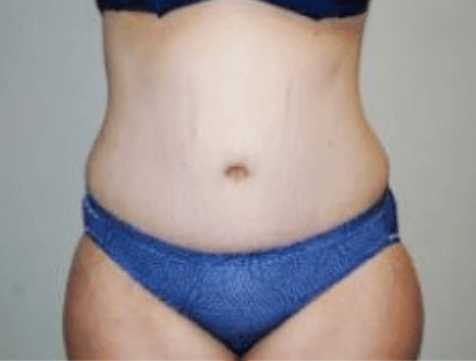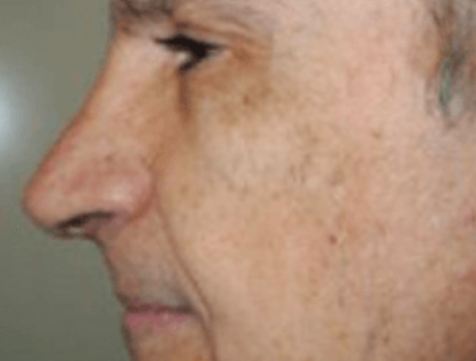Board Certified Plastic Surgeon Dr. Amy Bandy prides herself in being one of the Premier Plastic Surgeons in Newport Beach, California. Dr. Bandy enjoys educating her clients on what to expect with Plastic Surgery in Southern California. As a female plastic surgeon, many female patients feel that she can relate better.
Most people are not familiar with the normal course of healing after plastic surgery or other medical situations. They tend to panic when anything seems “not normal.” This means anything they don’t experience normally in their daily lives. For example, patients do not consider swelling, bruising, redness, or discomfort normal. Following a surgery, surgeons and medical personnel DO consider swelling, bruising, redness, and discomfort normal since it is an expected part of healing.
Contents
THE HEALING PROCESS
By using common sense, you know that if an area has recently been operated upon, it will go through a healing process. Having surgery is not like going to the beauty salon for a haircut. Healing occurs in the human body by a process called inflammation. Inflammation consists of four components, which in Latin are: rubor, tumor, calor, and dolor.
- Rubor means redness. For proper healing, blood vessels dilate and carry extra blood to the area that had surgery. This causes redness in the area.
- Tumor means swelling. An area that has had surgery is expected to swell. This is a normal part of the inflammatory process by which we heal.
- Calor refers to heat. This means an area that has recently had surgery is expected to be warmer than it normally is until healed.
- Dolor means pain. An area that recently had surgery is expected to cause discomfort. This is a normal warning system that makes an area tender to touch so that you will not disturb it while it is healing. This is a protective kind of pain.
AFTER SURGERY
Following surgery, you will be given instructions that are designed to protect your blood vessels. This is to prevent postoperative bleeding. Excess straining, lifting, bending, working out at the health club, etc., will cause your blood vessels to dilate and may cause bleeding or excess swelling.
SURGERY
At the time of the surgery, many blood vessels are divided and then sealed with an electrocautery. They do not heal together strongly, however, for approximately two weeks following surgery if you do something strenuous you may “blow out” a healing blood vessel and cause bleeding underneath the skin. This kind of bleeding is called a hematoma. If this occurs, it might require going back to surgery to repair the damage which would start the healing process from the beginning. For this reason, it is sensible to limit your athletic activities for the full two-week period.
BODY HEALING
Did you know the right and left sides of the body do not heal the same. One side always swells more, hurts more, gets more numbness, or exhibits some difference over the healing period; this is normal and temporary. For example, if both eyelids have surgery, one eyelid always swells more, one side feels more numb, one side is stiffer, one side moves better than the other, etc. This may make them look quite different. These differences occur in the two sides of the face, two breasts, two hips, in the feet, or even the two sides of the same nose.
AFTER SURGERY
After the surgery, you will be instructed to telephone my office when you have questions that require an explanation. Questions like “When can I take a shower?” Or, “Do I remove my bra to take a shower?” are certainly IMPORTANT, but they do not represent EMERGENCY questions. Important questions are to be directed to my office during standard office hours, 9:00 a.m. to 5:00 p.m., Monday through Friday. We are available to respond to EMERGENCY calls 24 hours a day. Emergency calls will include things like:
- Excessive bleeding.
- Sudden painful swelling of one operated area with associated bruising (this does not mean slight swelling and bruising, this means what it says, sudden excessive painful swelling).
- Fainting or loss of consciousness.
- Excessive vomiting which is not controlled by medication.
- Skin rash which covers a large portion of the body (not an occasional red bump).
During the time of healing, when the normal inflammatory processes and swelling distort the tissues, it is virtually impossible for you to determine what you final result will be. Be patient. When you see the swelling and distortion of the tissues, please understand that this is NORMAL during early healing, at least two weeks. It is also temporary. For instance, when cheek implants or chin implants are placed, there is a considerable swelling around them during the early weeks following surgery. This does not mean the implants are two large, or that they are malpositioned. It means your body is healing normally and has swelling around the implants.
How long will the swelling last? It varies from patient to patient, but may persist in the cheekbone areas or chin areas for a month or two.
BREAST IMPLANTS
Breast implants are placed behind the muscle, and may require three months or more before the muscle stretches out and allows the breast to shape itself the way it finally will be. Breast implants require, on average, three to twelve months before the final shape is achieved. It is impossible for you to tell the exact size and shape that your breast will be or the size of the breast implants, which are used during the first few weeks after surgery. This is due to tightness of the pectoral muscle, tightness of the skin and breast tissue over the implant, which makes them look smaller, and swelling, which makes them look larger, than the final result will vary. The implant used is the one agreed upon at your preoperative consultation. During early healing, however, your breast may appear larger or smaller than the size agreed upon depending on you own tissues. Please give them time to heal normally before panicking.
All of these things will be discussed at your regular postoperative appointments and do not require a phone call in the middle of the night or over the weekend. Actually, it requires three to twelve months before the final shape is achieved. Not three days, not ten days, anywhere from three months to a year.
NASAL SURGERY
Nasal Surgery on the lower one third of the nose requires approximately 12 months to lose all of the swelling which occurs following surgery. Patients find this very hard to understand and while the nose will show marked improvement within two to three weeks following surgery, the nose will not refine itself or lose all of its swelling for at least one year. Mark the date on your calendar. Not two weeks, two months – one year.
EYELID SURGERY
Eyelid swelling normally goes down pretty fast, and eyelids often look good within a week or two. They are not healed in a short time, however the eyelids normally feel stiff for at least six to twelve weeks following surgery, especially when you attempt to look up.
FACELIFT
Following a Facelift surgery, there is a numbness of the cheeks and around the ears from six weeks to one year, This numbness gradually goes away, but is part of the normal healing process. Minor lumps may be felt beneath the skin, and the face and neck may feel stiff for six to twelve weeks.
You are not expected to know everything about how you will heal after surgery; however you are expected to use good common sense.
I hope that this explanation helps explain what you can anticipate following your surgery. Please follow your instructions, but use your own common sense as well to help us help you heal the way we both want.
If you are ready to have the perfect body, book a consultation with Dr. Amy Bandy today by calling 949-574-0574 or filling out our online contact form.












